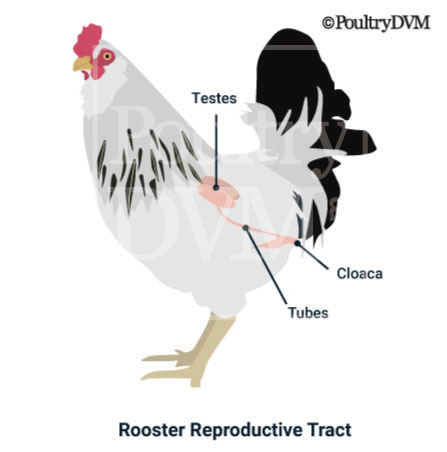Orchitis is an inflammation of one or both of a rooster's testicles. Roosters have two testes which are located inside of their body. They are positioned along their back, near the top of their kidneys.
There is limited research and information about the frequency of reproductive diseases in roosters. The only documented cases are in broiler breeders, relating to concerns about infertility.
Orchitis usually occurs secondary following epididymitis, and mostly commonly affects just one testicle, then both testes. Epididymo-orchitis refers to the inflammation of both testis and the epididymis. Orchitis is classified as interstitial, intratubular, or necrotizing.
Orchitis can be caused by a virus or bacteria. The most frequent bacteria known to cause orchitis are
Escherichia coli, Salmonella spp., Staphylococcus aureus, and
Pasteurella multocida.
Clinical signs
Clinical signs tend to be vague in the early stages of disease, unless the bird is used for breeding purposes than reduced fertility will be evident. The infection may remain localized in the testicular tissue, or it may spread to adjacent organs, air sacs, and coeloum, with the ability to cause coelomitis.
Diagnosis
- Complete blood count: Roosters with orchitis may have CBC results which indicate a leukocytosis and heterophilia.
- Radiography: If radiographs are taken, they may reveal an increase in soft tissue opacity in the dorsal coelom, cranial and ventral to the proximal kidney lobe, indicating the possibility of enlarged testes.
- Ultrasonography: An ultrasound is more sensitive and can be more accurate for identification of the shape and consistency of the testes.
Treatment
Treatment for orchitis involved broad-spectrum antibiotic therapy, while bacterial culture and sensitivity results from any collected fluid or tissues are pending.
